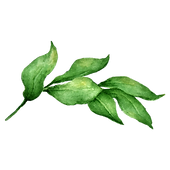
Bamboo Palm
Common name: Bamboo Palms/Reed Palm/Clustered Parlor Palm/Cane Palm
Scientific Name: Chamaedorea Seifrizii. Belongs to Chamaedorea family
Indian name : बैम्बू पाम
Common name: Bamboo Palms/Reed Palm/Clustered Parlor Palm/Cane Palm
Scientific Name: Chamaedorea Seifrizii. Belongs to Chamaedorea family
Indian name : बैम्बू पाम
Bamboo Palm is native to forests in Mexico, Guatemala and Honduras where it lives in the shade of larger trees, where it was essentially part of the understory in the rainforest and that is where it gets its incredible shade tolerance. Since it comes from a natural habitat that is pretty moist, it appreciates a regular watering schedule.

Maintainance
Benefits
• Like Most of the members of palm family, it is also easy to care for and hence one of the popular houseplants.
• “Bamboo palm are more resistant to insect infestation than areca palm” Dr. B C Wolverton book
• It also has one of the highest transpiration rate and pumps much needed moisture into the indoor atmosphere especially during dry winter month or dry summers.
• This palm is one of the top rated plants for removal of toxins like benzene, trichloroethylene and formaldehyde.

• Take care and avoid both direct sunlight and dark low light corners.
• Spider mites and scale insects are a risk when atmosphere is too dry. Wash the leaves periodically to prevent spider mites. If mites problem still persist, you can use soapy water.
• Provide plenty of water during period of active growths. In winter when grown in pots, water just enough to keep root ball moist.
• Palms benefit from feedings during the spring and summer months and they do best with fertilizers that are high in nitrogen.
• The only time you will need to prune your Bamboo plant is if it starts to show any discoloured leaves throughout the plant. The only time that this discoloration in the leaves normally happens is when your plant start to age, so the older leaves start looking brown and somewhat dull. You can just cut these older leaves off to salvage the plant and foster new growth, but just make sure you are using sharp shears and cut the front off at the base very close to the where it comes up from the soil. Dull blades on the pruners can make tears that can open up wounds on the plant.

Repotting and propogation
• Since Bamboo Palms are slow-growing plants they will not need to be repotted very frequently. It is only imperative to repot them when their pot is filled with roots as they no longer have any growing space at this point. Make sure you get a pot one size larger than older pot.
• The Bamboo Palm is propagated by seeds. It takes around 6 months or more to germinate. This is a very slow growing plant and It usually takes 2-5 years for a bamboo palm to reach a decent size. I'd recommend leaving propagation to the professionals and buying an established plant.
• Mature bamboo palms produce offshoots. These can be separated from the parent plant when repotting. However, I would not recommend it. This puts too much stress on the plants.
• When and if you separate the offshoot from the parent plant, be sure to use a clean, sharp implement to avoid traumatizing the plants. If the offshoot has roots which it should, pot it up as an independent plant. Keep the offshoot in a warm, sheltered place, and be sure to keep the soil evenly moist. Soon it will establish itself and you can begin treating it as an adult plant.
Where to plant it?
It is frequently used as an office or mall plant, and makes a nice addition to any room that can provide bright, filtered lighting and a comfortable temperature
